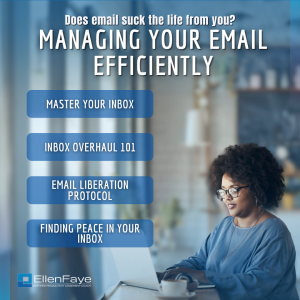20 Aug How Leadership Skills Drive Productivity
If you lead a team of 1, 10, 100, or 1000 there are skills you need to drive your productivity. These aren’t productivity skills per se’, they are leadership skills. Looking at leadership from a productivity perspective will help you boost your effectiveness and the effectiveness of your team. Where are your opportunities for growth?
Collaboration
Collaboration is the coming together of individuals, with positive intention, to work toward a best solution. These solutions develop from the sharing of knowledge, perspective, and experience in a psychologically safe space.
Communication
Communication is a process in which information is exchanged. It provides a forum for understanding and agreement and it builds connections. Good communication is key to creating productive teams.
Decision Making
A good decision is one in which the chosen course of action meets the objective with the least amount of risk and the greatest benefits. Leaders are expected to make decisions frequently and, often, quickly. Finding the balance between quickly and too quickly can be a challenge.
Delegation, Follow Up and Accountability
No matter how well you may do things, there is only one of you. You can accept the limitations of not delegating, or you can learn to delegate.
Delegation is the assignment of responsibility to another person for the purpose of carrying out a specific action. Delegating involves thought and planning, and, by nature, is proactive. Not delegating is reactive, allowing a situation to dictate actions.
Effective Meeting Best Practices
People don’t hate meetings; they just hate meetings that waste their time. When meetings are good, they advance all that is good in an operation. When they are bad, they waste resources.
Yes, meetings take time. They take you away from the work you’ve prioritized. However, when people come together collectively, share information constructively, and stay focused on the task at hand, meetings can result in solid decision-making with the ability to quickly move into action.
Productive meetings take planning before, during, and after. Additionally, having meeting agreements sets the stage for on–going meeting success.
Conflict
Conflict is a natural occurrence. An individual’s past experiences inform thought and result in different people holding different perspectives. When important decisions are on the table and there are differing opinions, conflict can arise. How leaders navigate conflict affects the team’s productivity.
Toxic Personalities
A safe work environment drives productivity. Yet toxic personalities are often revered in the workplace.
While in the short term this may seem sustainable, perhaps even beneficial, the long-term cost to the team may be irreparable. Not only does tolerating the “bad apple” suggest that accepting mediocrity or rule-bending is acceptable, it can also undermine the productivity of the rest of the team.
All these leadership skills and concepts impact a team’s ability to get into flow, do innovative work and drive success. Without these skills leading a productive and effective team is next to impossible.
This is the chapter highlights from Chapter 15 (the last chapter!) of my new book Productivity for How You’re Wired available on Amazon. Many templates are included via the time tools link discussed in the book.














